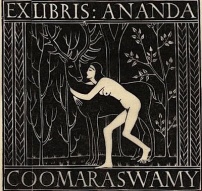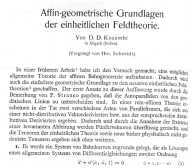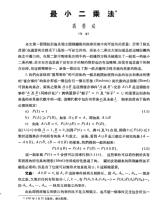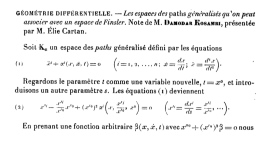TNN | Apr 26, 2016, 10.46 AM IST
Panaji: The state government has revised the D D Kosambi Research Fellowship scheme. The objective of the scheme is to encourage Goan scholars to undertake research in the field of Goan history, culture, arts, social studies and related areas. Three fellowships, under the scheme, will be awarded every year by the state - at the junior level, at the senior level and at the post-doctoral level.
"Only topics that are closely connected to Goa will be accepted. However, authentic topics pertaining to Goa may also be considered for the fellowship depending upon the decision taken by the expert committee," the revised scheme document reads.
An individual who has completed post-graduation and is 35 and younger will be eligible to undertake research in the junior category. For the senior category an individual who has completed post-graduation and is above the age of 35 will be eligible. And for eligibility at the post-doctoral level, the individual will have to have completed PhD. There is no age bar for the third category.
"In case of exceptionally talented scholars of proven record with authentic work to their credit, the rules regarding educational qualifications may be relaxed, if recommended by the selection committee. The fellowship shall be awarded to any scholar only once in his lifetime under each category," the scheme states.
Eligible scholars for junior category will be awarded a fellowship up to Rs 10,000 per month for a maximum period of two years, on case-to-case basis. Scholars in the senior and post-doctoral category will be awarded a fellowship of Rs 20,000 per month for a maximum period of two years, again on case-to-case basis.
Every year, the department of art and culture will release an advertisement inviting applications for the "D D Kosambi Research Fellowship" for scholars and a selection committee constituted by the government will select scholars for the fellowship.
The project report in the form of two hard copies and a soft copy will have to be submitted within a period of 30 days after the completion of two years of the fellowship. The project submitted will be exclusively the property of department of art and culture, as per the scheme guidelines.
 The amount paid suggests that the books were viewed as very valuable: Rs 75K in the late 1960’s was a huge sum of money. And given that, it was quite amazing that the collection had not been kept as one, but the books had apparently been shelved by subject (!) and were then like any other books, and so subject to the periodic culling that most libraries undertake to clear shelves and make space for new books. (In some sense I was not too surprised, having myself bought a book that had been owned by AnandaKentish Coomaraswamy and that had somehow made its way to Princeton. The initials AKC were pencilled in on the first page, but apart from the bookplate, there was little else to show that it had been his. Unfortunately that book is no longer with me, and in hindsight, I think that when libraries acquire collections from scholars of note, they should make some attempt to keep the collections intact. Mercifully the JNU has done that now with more recent acquisitions..).
The amount paid suggests that the books were viewed as very valuable: Rs 75K in the late 1960’s was a huge sum of money. And given that, it was quite amazing that the collection had not been kept as one, but the books had apparently been shelved by subject (!) and were then like any other books, and so subject to the periodic culling that most libraries undertake to clear shelves and make space for new books. (In some sense I was not too surprised, having myself bought a book that had been owned by AnandaKentish Coomaraswamy and that had somehow made its way to Princeton. The initials AKC were pencilled in on the first page, but apart from the bookplate, there was little else to show that it had been his. Unfortunately that book is no longer with me, and in hindsight, I think that when libraries acquire collections from scholars of note, they should make some attempt to keep the collections intact. Mercifully the JNU has done that now with more recent acquisitions..). Nevertheless, a chance conversation shortly thereafter on the vagaries of libraries and the nature of intellectual inheritances started me off on my exploration of Kosambi and his mathematics. The idea was, on the face of, a simple one. What was the extent of Kosambi’s mathematical contributions compared to, say, his contributions to history or numismatics. How would the math stack up? Having been in TIFR before I came to JNU, I had also heard of how he travelled from Pune to Bombay every day on the Deccan Queen, how he was fired from TIFR, etc. etc. But I also found out that precious little was known of DDK’s other life by the historians. That the mathematics was too different and far too difficult is all too true, but still.
Nevertheless, a chance conversation shortly thereafter on the vagaries of libraries and the nature of intellectual inheritances started me off on my exploration of Kosambi and his mathematics. The idea was, on the face of, a simple one. What was the extent of Kosambi’s mathematical contributions compared to, say, his contributions to history or numismatics. How would the math stack up? Having been in TIFR before I came to JNU, I had also heard of how he travelled from Pune to Bombay every day on the Deccan Queen, how he was fired from TIFR, etc. etc. But I also found out that precious little was known of DDK’s other life by the historians. That the mathematics was too different and far too difficult is all too true, but still. To start with, I thought it would be good to put together his life mathematical, namely all his math and stats papers. Much of that was on the web, except that it was in bits and pieces, and all over the place. No single bibliography was accurate, and no matter where I looked, there were gaps. Many of the Indian journals where he published were not (and still are not) digitized. Some of the names that were given in the existing lists were incomplete or incorrect, many papers were missing. The Rendiconti della Reale Accademia Nazionale dei Lincei or the Sitzungsberichten der Preussische Akademie der Wissenschaften, Physikalisch-mathematische klassewere both uncommon journals that were impossible to locate anywhere in India, for instance. I went to the Ramanujan Institute in Chennai in late 2009, looking for copies of the Journal of the Indian Mathematical Society and Mathematics Student where DDK had published a lot of his work in the 1930’s and 1940’s. It’s too depressing to recount that visit… Nothing could be located, and I left empty-handed after a wasted morning.
To start with, I thought it would be good to put together his life mathematical, namely all his math and stats papers. Much of that was on the web, except that it was in bits and pieces, and all over the place. No single bibliography was accurate, and no matter where I looked, there were gaps. Many of the Indian journals where he published were not (and still are not) digitized. Some of the names that were given in the existing lists were incomplete or incorrect, many papers were missing. The Rendiconti della Reale Accademia Nazionale dei Lincei or the Sitzungsberichten der Preussische Akademie der Wissenschaften, Physikalisch-mathematische klassewere both uncommon journals that were impossible to locate anywhere in India, for instance. I went to the Ramanujan Institute in Chennai in late 2009, looking for copies of the Journal of the Indian Mathematical Society and Mathematics Student where DDK had published a lot of his work in the 1930’s and 1940’s. It’s too depressing to recount that visit… Nothing could be located, and I left empty-handed after a wasted morning. In 2010, though, I was visiting professor at the University of Tokyo for a month, and luckily, the Komaba campus where I was located, housed the mathematics department and more importantly, its library. It took a few hours spread out over several days, but before long, I not only had the bulk of DDK’s papers in photocopy or in digital form, but I also discovered, via MathSciNet, of DDK’s nom de plume S. Ducray, under which name he had written four papers. I also had access to the reviews of many of his mathematical papers by others, and could see many very famous names among the reviewers. As an aside, I should add that the library of Tokyo University is one of the few that have the complete sets of Journal of the Indian Mathematical Society and Mathematics Student, including the volumes published during the World War II years, when Japan and India were on different sides…
In 2010, though, I was visiting professor at the University of Tokyo for a month, and luckily, the Komaba campus where I was located, housed the mathematics department and more importantly, its library. It took a few hours spread out over several days, but before long, I not only had the bulk of DDK’s papers in photocopy or in digital form, but I also discovered, via MathSciNet, of DDK’s nom de plume S. Ducray, under which name he had written four papers. I also had access to the reviews of many of his mathematical papers by others, and could see many very famous names among the reviewers. As an aside, I should add that the library of Tokyo University is one of the few that have the complete sets of Journal of the Indian Mathematical Society and Mathematics Student, including the volumes published during the World War II years, when Japan and India were on different sides…